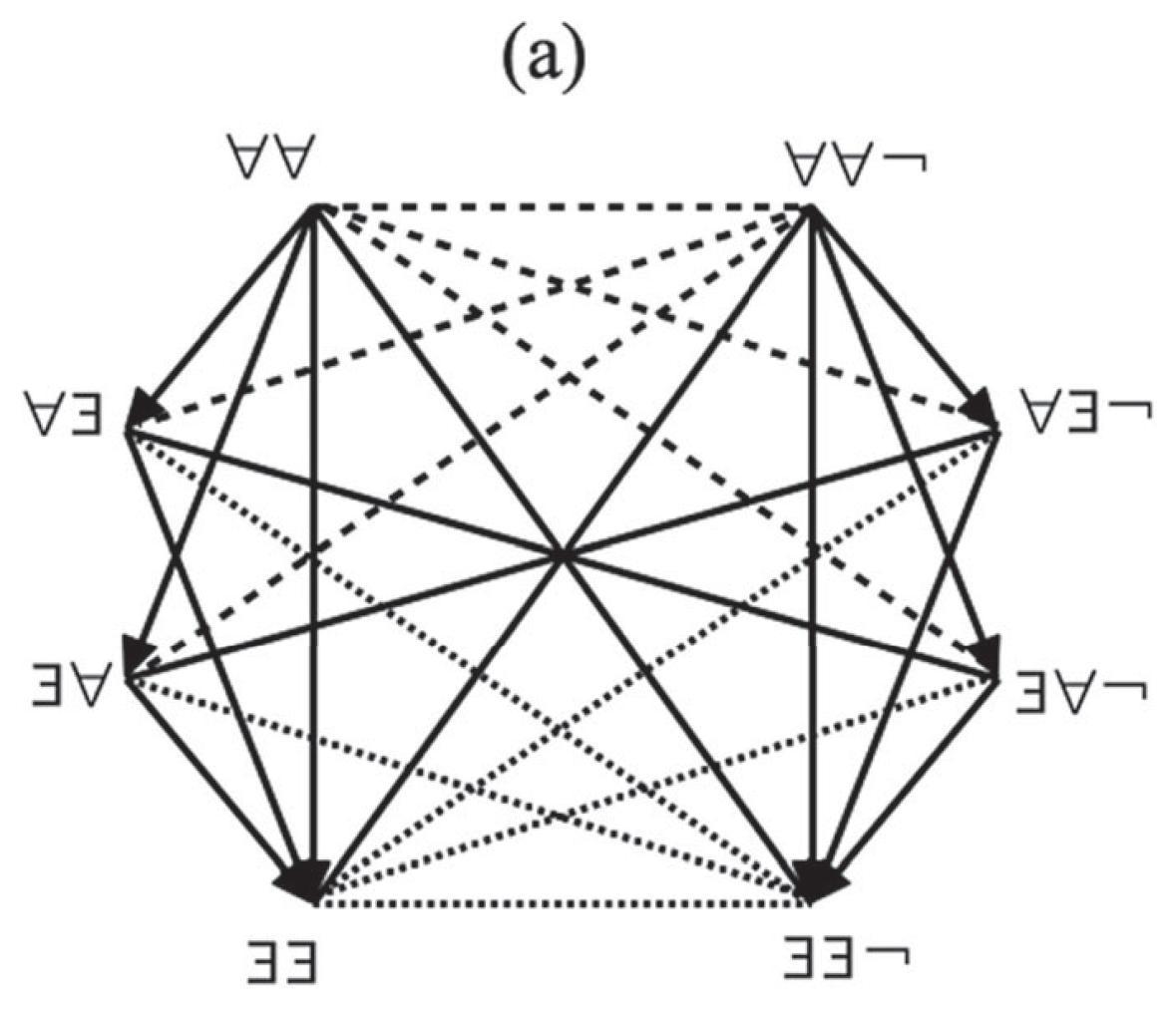
Boolean considerations on John Buridan's octagons of opposition (2019), p. 123
by Demey, Lorenz

Copyright according to our policy
Caption
- (a) Buridan’s octagon for the propositions of unusual construction; (b) the classical square of opposition for the categorical statements embedded as a subdiagram inside this octagon.
- Aristotelian family
- Buridan Sigma-4
- Boolean complexity
- 5
- Number of labels per vertex (at most)
- 1
- Uniqueness of the vertices up to logical equivalence
- Yes
- Errors in the diagram
- No
- Shape
- Octagon (irregular)
- Colinearity range
- 0
- Coplanarity range
- 0
- Cospatiality range
- 0
- Representation of contradiction
- By central symmetry
Logic
Geometry
- Conceptual info
- No
- Mnemonic support (AEIO, purpurea ...)
- No
- Form
- none
- Label type
- symbolic
- Symbolic field
- logic
- Contains partial formulas or symbols
- Yes
- Logical system
- syllogistics
- Contains definitions of relations
- No
- Form
- dotted lines ,
- solid lines ,
- none ,
- dashed lines
- Has arrowheads
- Yes
- Overlap
- No
- Curved
- No
- Hooked
- No
- As wide as vertices
- No
- Contains text
- No
- Label type
- none
Vertex description
Edge description
- Diagram is colored
- No
- Diagram is embellished
- No
Style
Additional notes
- $\forall\forall\textcolor{white}{\neg}$ = all S all P are = $\exists x Sx \wedge \forall x (Sx \to \forall y(Py \to x = y))$
$\forall\exists\textcolor{white}{\neg}$ = all S some P are = $\exists x Sx \wedge \forall x (Sx \to \exists y(Py \wedge x = y))$
$\exists\forall\textcolor{white}{\neg}$ = some S all P are = $\exists y Py \wedge \exists x (Sx \wedge \forall y(Py \to x = y))$
$\exists\exists\textcolor{white}{\neg}$ = some S some P are = $\exists x (Sx \wedge \exists y(Py \wedge x = y))$
$\forall\forall\neg$ = all S all P are not = $\forall x (Sx \to \forall y(Py \to x \neq y))$
$\forall\exists\neg$ = all S some P are not = $\neg\exists y Py \vee \forall x (Sx \to \exists y(Py \wedge x \neq y))$
$\exists\forall\neg$ = some S all P are not = $\neg\exists x Sx \vee\exists x (Sx \wedge \forall y(Py \to x \neq y))$
$\exists\exists\neg$ = some S some P are not = $\neg\exists x Sx \vee\exists x (Sx \wedge \exists y(Py \wedge x \neq y))$
Cf. p. 122.